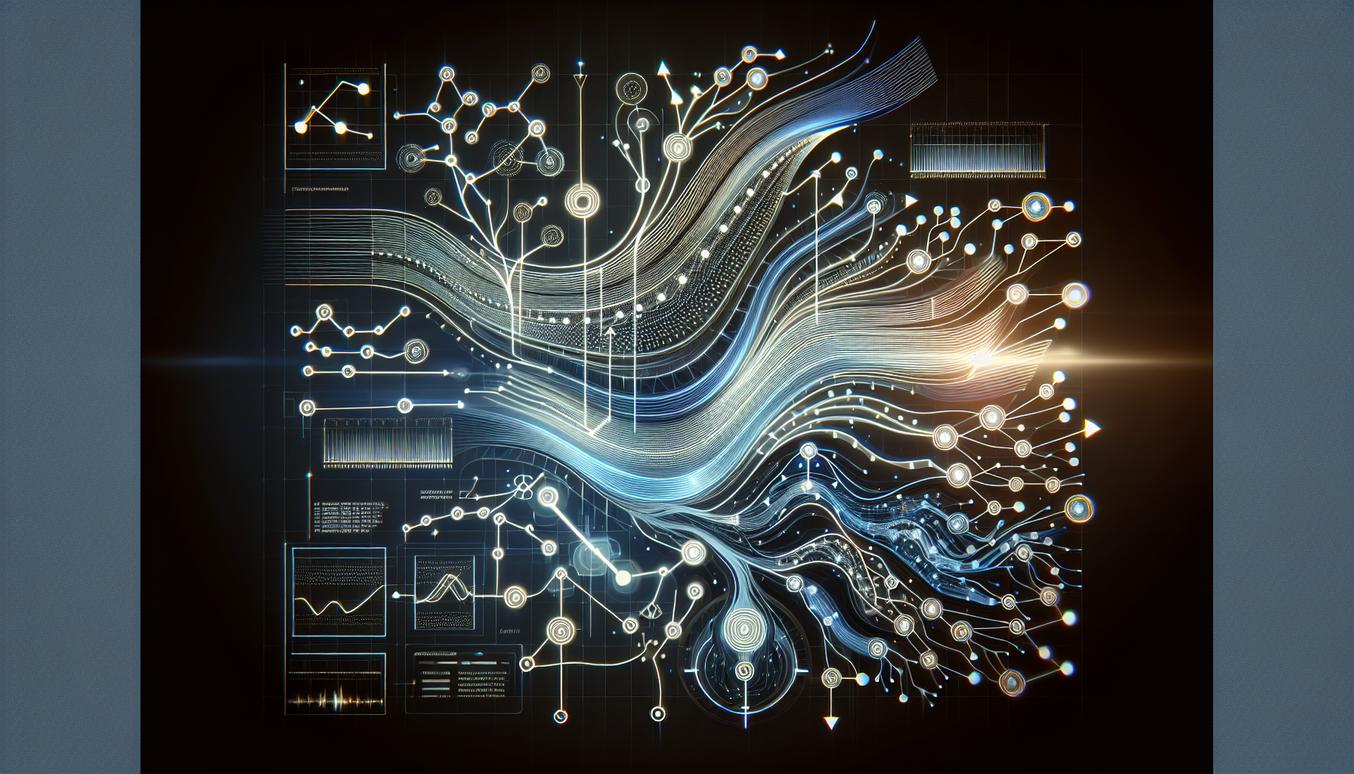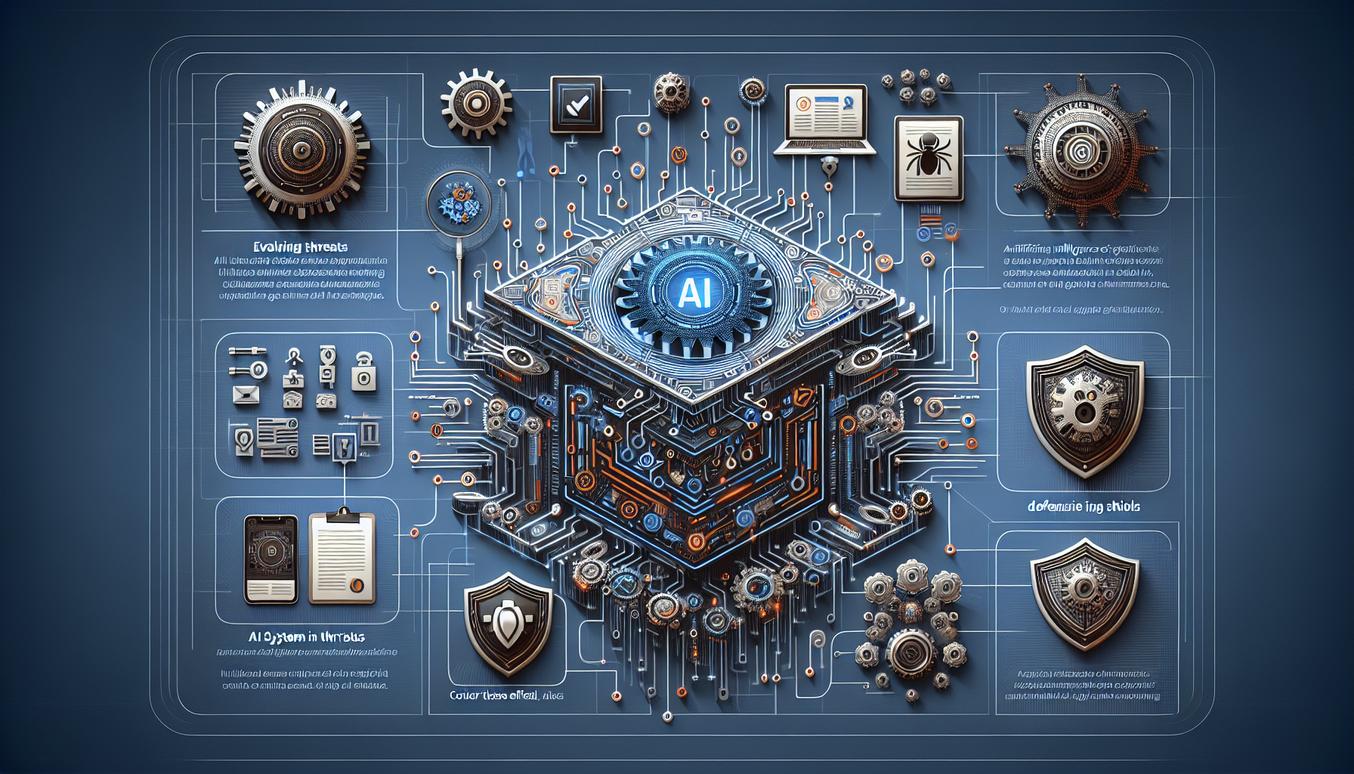A Beginner’s Guide to Neural Networks: From Core Concepts to Practical Applications
Table of Contents
- What are neural networks? A conceptual primer
- Milestones that shaped contemporary neural methods
- Core elements unpacked: neurons, layers, and activation dynamics
- How training works: loss, optimization, and generalization
- Common architectures at a glance: feedforward, convolutional, recurrent, transformer-style
- Step-by-step: assembling a simple model from data to inference
- Inspecting models: interpretation and debugging techniques
- Responsible model design: fairness, robustness, and safety
- Short case studies: applications in healthcare, finance, and automation
- Learning pathways and reference materials
What are neural networks? A conceptual primer
At its heart, a neural network is a computational model inspired by the human brain. Think of it not as a literal brain replica, but as a powerful pattern-recognition machine. Imagine you’re teaching a child to identify a cat. You don’t list explicit rules like “if it has pointy ears, whiskers, and a long tail, it’s a cat.” Instead, you show them many examples of cats. Over time, the child’s brain learns to recognize the underlying, often subtle, patterns that define a cat.
Neural networks operate on a similar principle. They learn directly from data. Instead of being programmed with specific instructions for a task, they are trained on a large number of examples. This ability to learn from data makes them incredibly versatile, powering everything from a smartphone’s facial recognition to complex medical diagnostic tools. They excel at tasks where the rules are too complex or nuanced for a human to define explicitly, such as understanding natural language or identifying anomalies in financial transactions.
Milestones that shaped contemporary neural methods
The concept of neural networks has been around for decades, experiencing periods of intense interest followed by “AI winters” where progress slowed. However, a few key developments in the early 21st century catapulted them into the mainstream. The first was the refinement of an algorithm called backpropagation, which provided an efficient way for networks to learn from their mistakes.
The second game-changer was the advent of massive computational power, specifically the use of Graphics Processing Units (GPUs). Originally designed for video games, their parallel processing capabilities were perfectly suited for the repetitive calculations required by neural networks. Finally, the explosion of “big data” provided the fuel. Datasets like ImageNet, containing millions of labeled images, gave these hungry models the vast number of examples they needed to learn effectively. This powerful trifecta—efficient algorithms, powerful hardware, and large datasets—ignited the deep learning revolution we see today.
Core elements unpacked: neurons, layers, and activation dynamics
To understand how neural networks work, we need to break them down into their fundamental components. Imagine an assembly line. Each station performs a small, specific task, and their collective effort produces a complex result. A neural network is structured similarly.
- Neurons (or Nodes): These are the individual “workers” on the assembly line. A neuron receives one or more inputs, each with an associated weight (which signifies its importance). It sums up these weighted inputs and then passes the result through an activation function to produce an output.
- Layers: Neurons are organized into layers. The input layer receives the initial data (like the pixels of an image). The output layer produces the final result (like the probability that the image is a cat). In between are one or more hidden layers, where the real magic happens. It is in these hidden layers that the network learns to identify increasingly complex patterns. A “deep” neural network is simply one with many hidden layers.
Activation functions with intuitive metaphors
An activation function is a crucial component within each neuron. It decides whether the neuron should be “activated” or “fire” based on its summed input. It introduces non-linearity into the network, which is essential for learning complex relationships in data. Here are a few common ones explained with simple metaphors:
- ReLU (Rectified Linear Unit): Think of this as a simple on/off switch. If the input is positive, it passes the value through. If the input is negative, it outputs zero. It’s simple, fast, and the most common choice for many types of neural networks.
- Sigmoid: This is like a dimmer switch. It squashes any input value into a smooth range between 0 and 1. This is very useful for the output layer when you need to predict a probability.
- Tanh (Hyperbolic Tangent): Similar to the dimmer switch, but it squashes values into a range between -1 and 1. This can be useful in hidden layers as it centers the output around zero.
How training works: loss, optimization, and generalization
Training a neural network is the process of teaching it to perform a task. This involves a feedback loop where the network makes a guess, gets graded on its performance, and adjusts its internal parameters to do better next time. This cycle is repeated thousands or even millions of times.
- Loss Function: This is the “grader” or “scorecard.” It measures the difference between the network’s prediction and the actual correct answer. A high loss value means the network is very wrong; a low loss value means it’s close to the truth. The goal of training is to minimize this loss.
- Optimization: This is the process of adjusting the network’s weights to reduce the loss. The most common optimization algorithm is called gradient descent. Imagine you are a hiker in a thick fog, trying to find the bottom of a valley (the lowest loss). You can’t see the whole landscape, but you can feel the slope of the ground beneath your feet. You take a small step in the steepest downward direction. By repeating this process, you gradually make your way to the bottom. This is precisely what gradient descent does: it calculates the “slope” of the loss function and nudges the weights in the direction that decreases the loss most.
- Generalization: This is the ultimate goal. A well-trained model should not only perform well on the data it was trained on but also make accurate predictions on new, unseen data. The danger here is overfitting, where the model essentially memorizes the training data instead of learning the underlying patterns. An overfit model performs perfectly on its training set but fails spectacularly on new data.
Gradient descent variants and practical tradeoffs
While the concept of gradient descent is simple, there are several ways to implement it, each with its own benefits. Choosing the right optimizer can significantly impact training speed and model performance.
- Stochastic Gradient Descent (SGD): Instead of calculating the slope based on the entire dataset (which is slow), SGD takes a step after looking at just one single training example. It’s much faster per step but can be noisy and erratic, like a jittery hiker.
- Mini-batch Gradient Descent: This is the happy medium and the most common approach. It calculates the slope and takes a step based on a small batch of examples (e.g., 32 or 64). It’s more stable than SGD and more efficient than using the full dataset.
- Adam (Adaptive Moment Estimation): A more advanced optimizer that is often the default choice. Adam adapts the step size for each weight individually, often leading to faster convergence than other methods. For a deeper dive, Sebastian Ruder’s post is an excellent primer on optimization and gradient descent.
Common architectures at a glance: feedforward, convolutional, recurrent, transformer-style
Not all neural networks are built the same. Different architectures are designed to excel at different types of tasks by making certain assumptions about the data.
- Feedforward Neural Networks (FNNs): The most basic type. Information flows in only one direction, from input to output, without any loops. They are great for structured or tabular data, like predicting house prices from features like square footage and number of bedrooms.
- Convolutional Neural Networks (CNNs): The specialists for grid-like data, especially images. Instead of looking at every pixel individually, CNNs use “filters” to scan for local patterns like edges, corners, and textures. These lower-level patterns are then combined in deeper layers to recognize more complex objects.
- Recurrent Neural Networks (RNNs): Designed for sequential data where order matters, like text or time-series data. RNNs have a “memory” loop that allows information to persist from one step in the sequence to the next, giving them a sense of context.
- Transformer-style: The current state-of-the-art for natural language processing. Instead of processing a sentence word-by-word, transformers use a mechanism called self-attention to weigh the importance of all other words in the sentence simultaneously. This allows them to capture complex long-range dependencies and context. The foundational paper “Attention Is All You Need” introduced this groundbreaking architecture.
Step-by-step: assembling a simple model from data to inference
Building a model involves more than just writing code. It’s a structured process that begins long before training and continues after the final prediction is made.
- Define the Problem: Clearly state what you want to achieve. Is it a classification task (e.g., spam or not spam) or a regression task (e.g., predicting a stock price)?
- Gather and Prepare Data: This is often the most time-consuming yet critical stage. Your model is only as good as the data it learns from.
- Design the Model Architecture: Choose the right type of network (e.g., CNN for images), the number of layers and neurons, and the activation functions.
- Train the Model: Select a loss function and an optimizer, then feed your data to the model. Monitor the training process to ensure the loss is decreasing.
- Evaluate and Tune: Test your trained model on a separate dataset (a test set) that it has never seen before. If the performance isn’t good enough, go back and tune your model’s hyperparameters (like the learning rate or number of layers).
- Deploy for Inference: Once you are satisfied with the model’s performance, you can deploy it to make predictions on new, real-world data.
Data preparation, augmentation, and common pitfalls
Garbage in, garbage out. This mantra is especially true for neural networks. Proper data handling is non-negotiable.
- Normalization: It’s crucial to scale all input features to a similar range (e.g., 0 to 1). This helps the gradient descent algorithm to converge more smoothly.
- Handling Missing Data: You must decide on a strategy for missing values—either remove the records, or impute (fill in) the missing values using a method like the mean or median.
- Data Augmentation: A powerful technique, especially for image data, where you can artificially expand your dataset. For example, you can create new training samples by slightly rotating, cropping, or changing the brightness of existing images. This makes your model more robust.
- Common Pitfalls: A major pitfall is data leakage, where information from the test set accidentally bleeds into the training set, giving you an overly optimistic evaluation of your model’s performance. Always maintain a strict separation between your training, validation, and test data.
Inspecting models: interpretation and debugging techniques
While sometimes called “black boxes,” there are techniques to peek inside a trained neural network and understand its behavior. Debugging a model that isn’t learning is a core skill for any practitioner.
- Interpretation: Tools like SHAP and LIME can help explain a model’s prediction on a specific input. For an image classifier, this might involve highlighting the pixels that were most influential in its decision to label an image as a “cat.”
- Debugging Heuristics: If your model’s loss isn’t decreasing, start simple. Check your data pipeline for errors. Try a very small learning rate. Attempt to overfit a tiny subset of your data first; if the model can’t even memorize a few examples, there’s likely a bug in your architecture or code. Upcoming strategies for 2025 and beyond will focus on automated debugging tools that can suggest potential fixes based on training dynamics.
Responsible model design: fairness, robustness, and safety
As neural networks become more integrated into society, designing them responsibly is paramount. Building a model that is simply accurate is no longer enough.
- Fairness: A model trained on biased data will produce biased outcomes. For example, a hiring model trained on historical data from a male-dominated industry might unfairly penalize female candidates. It’s crucial to audit your data for biases and use techniques to mitigate their impact.
- Robustness: How does your model behave when faced with unexpected or even adversarial inputs? A robust model should not be easily fooled by tiny, imperceptible changes to its input, which is a major security concern in applications like self-driving cars.
- Safety: Understand the limitations and potential failure modes of your model before deploying it in a high-stakes environment. This includes being transparent about the model’s confidence in its own predictions.
Short case studies: applications in healthcare, finance, and automation
The impact of neural networks is felt across nearly every industry. Here are a few examples:
- Healthcare: CNNs are used to analyze medical scans like MRIs and X-rays to detect signs of diseases like cancer or diabetic retinopathy, often with accuracy rivaling or exceeding human experts.
- Finance: Neural networks analyze transaction patterns in real-time to detect fraudulent activity. They are also used in algorithmic trading to predict market movements based on vast amounts of historical data.
- Automation: In autonomous vehicles, neural networks process data from cameras and sensors to identify pedestrians, other vehicles, and traffic signs. In customer service, transformer-based models power sophisticated chatbots that can understand and respond to user queries.
Learning pathways and reference materials
This guide provides a conceptual overview, but the best way to truly learn about neural networks is by building them. Start with a high-level framework like Keras (part of TensorFlow) or PyTorch and work your way through tutorials.
For those looking to deepen their understanding, several excellent resources are available:
- For a broad overview, the Wikipedia page on Artificial Neural Networks is a good starting point.
- For a structured, academic approach, the Stanford CS231n course on Convolutional Neural Networks for Visual Recognition is one of the best in the world, with all materials available online.
- For a comprehensive theoretical foundation, the “Deep Learning” textbook by Goodfellow, Bengio, and Courville is considered the definitive reference, available for free online at www.deeplearningbook.org.
The field of neural networks is constantly evolving, but the core principles of learning from data, iterative optimization, and thoughtful architecture design will remain fundamental for years to come.









